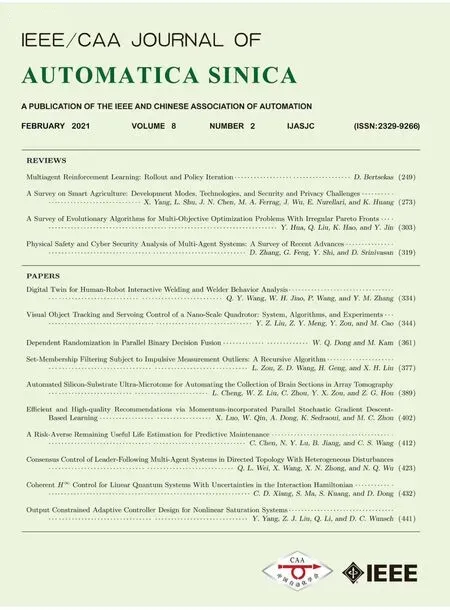Dependent Randomization in Parallel Binary Decision Fusion
Weiqiang Dong, Member, IEEE, and Moshe Kam, Life Fellow, IEEE









TABLE V THE OUTPUT OF THE 2-LD SYSTEM EMPLOYING DEPENDENT RANDOMIZATION WHEN THE DFC LOST SYNCHRONIZATION WITH THE LDS GROUP BEFORE AND AFTER A CORRECTIVE ACTION IS TAKEN

TABLE VI THE OUTPUT OF THE 3-LD SYSTEM EMPLOYING DEPENDENT RANDOMIZATION WHEN THE DFC LOST SYNCHRONIZATION WITH THE LDS GROUP BEFORE AND AFTER A CORRECTIVE ACTION IS TAKEN

Fig.9. Zooming in on the ROC curve of the 2-LD system employing dependent randomization.

B. Numerical examples
1) 2-LD System: The design input and output of the 2-LD system employing dependent randomization with α=0.2009 was shown in Table II. When the DFC lost synchronization with the LDs group in the 2-LD system employing dependent randomization, the input and output of the redesigned algorithm are shown in Table V and Fig.8. Before the loss of synchronization the system operated at C=(0.2009,0.8261)(Table II). After the loss of synchronization the system operates at C∗=(0.2009,0.7005).
2) 3-LD System: The design input and output of the 3-LD system employing dependent randomization with α=0.1708 was shown in Table III. When the DFC lost synchronization with the LDs group in the 3-LD system employing dependent randomization, the input and output of the redesigned algorithm are shown in Table VI and Fig.10. Before the loss of synchronization the system operated at C=(0.1708,0.8448)(Table II). After the loss of synchronization the system operates at C∗=(0.1708,0.7974).
More details of the numerical examples are available in https://github.com/moshekam/Dependent-Randomization.
V. PARTIAL LOSS OF SYNCHRONIZATION AMONG THE LOCAL DETECTORS







as those studied in [14]–[18].
 IEEE/CAA Journal of Automatica Sinica2021年2期
IEEE/CAA Journal of Automatica Sinica2021年2期
- IEEE/CAA Journal of Automatica Sinica的其它文章
- Digital Twin for Human-Robot Interactive Welding and Welder Behavior Analysis
- Visual Object Tracking and Servoing Control of a Nano-Scale Quadrotor: System, Algorithms,and Experiments
- Physical Safety and Cyber Security Analysis of Multi-Agent Systems:A Survey of Recent Advances
- A Survey of Evolutionary Algorithms for Multi-Objective Optimization Problems With Irregular Pareto Fronts
- A Survey on Smart Agriculture: Development Modes, Technologies, and Security and Privacy Challenges
- Multiagent Reinforcement Learning:Rollout and Policy Iteration
